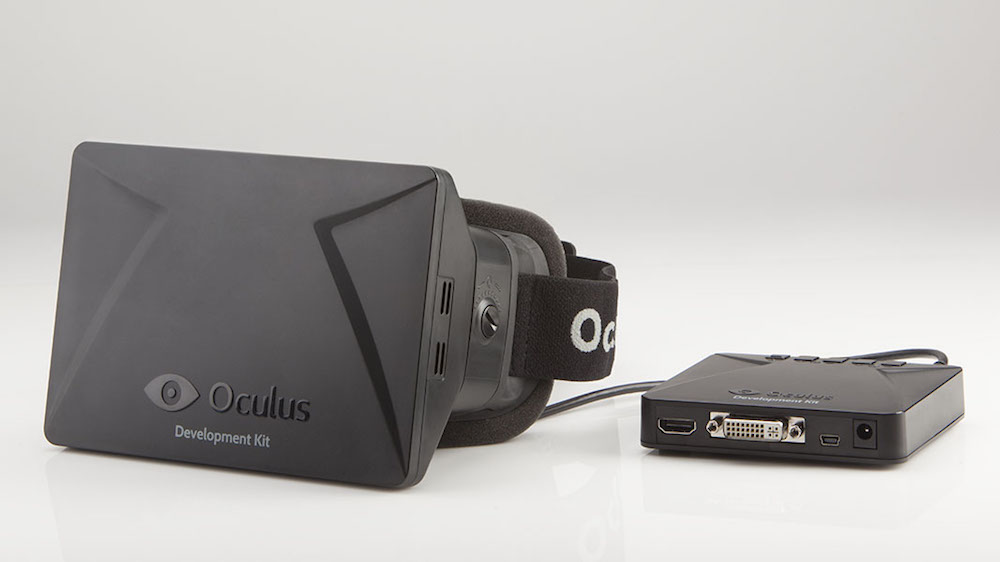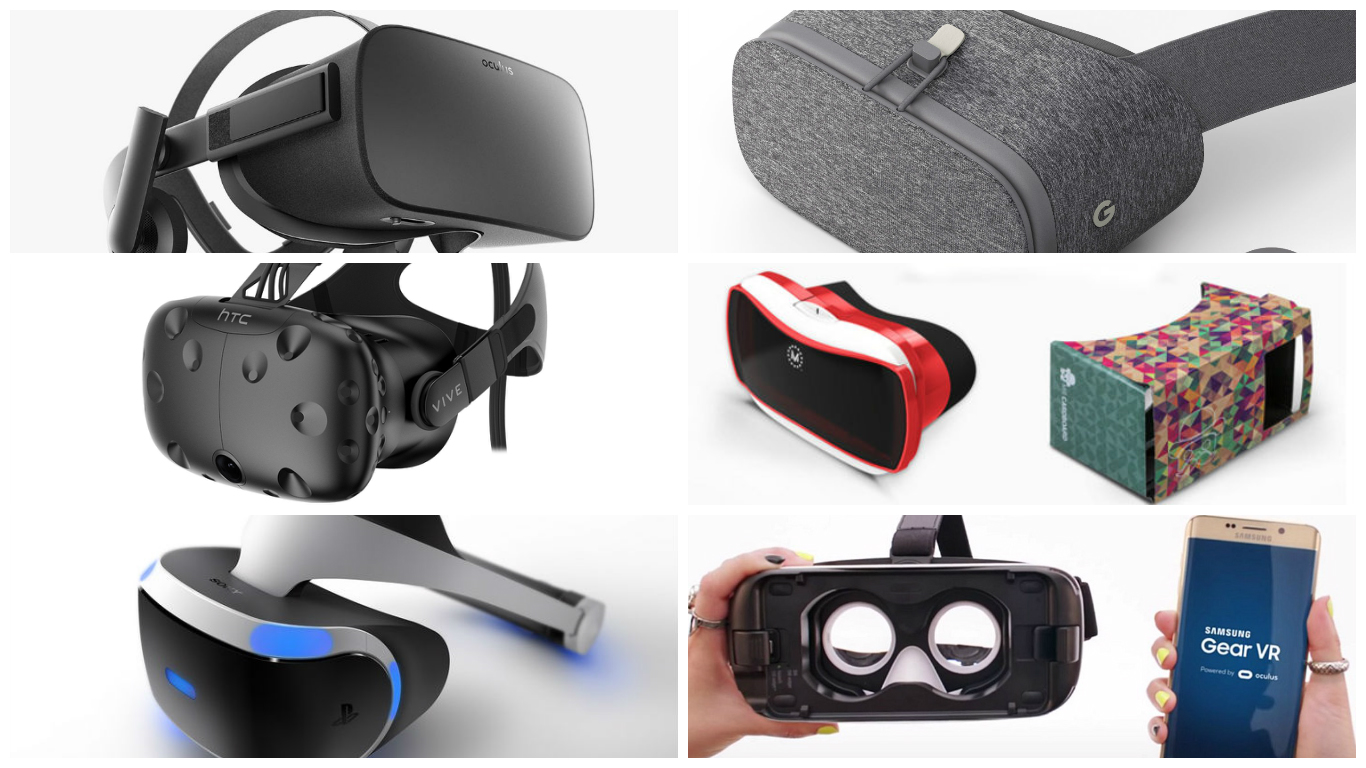Remember back in early 2012, when VR was just thought of as science fiction, or at best as a failed experiment of the 90’s? That was 5 years ago.
I know, right? 5 years. Actually typing that out makes me feel old. Back then, those of us who called ourselves ‘VR enthusiasts’ were just happily typing away our dreams in different forums [shoutout to the MTBS3D VR subsection], dreaming of the day we’d have the Holodeck, the Matrix, or whatever version of VR we each thought of as the “high standard” of a true virtual reality. We were supposed to get to the point where it feels as real as reality, and where VR could be something that we could just jack into whenever we pleased.
So what has happened since then? We’re obviously not ‘there’, wherever ‘there’ will be, but we’ve done so much that it’s high time we look back at some of the things we’d never have expected just 5 years ago.
You Can Go Anywhere and Buy VR HMDs
Say what you want about who started what, but today we’re at a point where we have millions of VR HMDs in homes all over the world. As a side note, I’m so glad we collectively stuck with calling it head-mounted displays, and not something like “VR Helmet”, “VR Glasses”, or any of the other many attempts to call it something else.
Don’t have one yet? Just go to your local hardware store, pay as little as $5, et voilá! You, my good person, are the owner of a VR HMD. Not the best VR HMD out there, but you have one. It’s that easy. Hell, my local grocery store has VR HMDs! They even became “Christmas present of the year” here in Sweden in 2016! Most of them are unfortunately utterly terrible, but still.
I remember 2012. I was a first-year at Stockholm University, studying game development, and had found out that we could actually make the faculty order us cool shit if we just asked. Sure, there had to be a good reason why, they didn’t have infinite money, but as the head professor of the games courses had just purchased a $50k simulator chair basically on a whim, I figured I might just ask.
Almost exactly five years ago, the hot thing I could think of to control virtual worlds was the early Emotiv EEG headsets. I mean, using computers with MIND CONTROL!? Which self-respecting software development institution wouldn’t want to have that to tinker with!?
…that didn’t go over too well.
And then the Oculus Kickstarter happened. That peaked the interest of even the head professor’s mind, and as soon as the DK1’s became available for purchase online (using school funds for kickstarters isn’t really a thing they’re allowed to do), all I had to do was ask. They ordered not just one but four, “Because we gotta test multiplayer things, right?” (non-literal quote from head professor).
VR was here.
Multi-Billion Dollar Companies Spend Multi-Billion Dollar Figures
And Oculus did hold on to that exclusivity for quite a while. They were THE VR company for a long time, and things seemed to progress fairly quickly for them, at least compared to the dead landscape we had just a year or two earlier. But, in 2014, someone else stepped in: Valve. The games behemoth themselves saw the potential of VR and its use in games, and decided to join the fun. But, you know, it was just a fun thing on the side, nothing they’d plan to release as it’s own thing — and BAM!
Out of seemingly nowhere, Facebook decides to enter the field, and buys Oculus for 2.4 billion dollars.
So this is in spring of 2014. Less than two years after a crowdfunding campaign to get VR started had taken off, and we now see two of the largest companies in the world take notice of the technology, spending time and money to get the tech to where it needed to go.
And for me personally, this was the year VR really took off. I’d already become “the VR guy” among my friends, but until then I’d been the lone advocate of the tech and its promises, at least in my immediate surroundings. I decided that had to end and helped start the Stockholm VR Meetup that summer, with the intent of simply gathering people with whom I could share our combined excitement over the tech. Little did I know that we’d eventually grow to over 1300 members strong, with a plethora of developers and companies showcasing their ventures into the fields. But that’s a story for another Medium post.
With companies gathering and the money starting to flow, so came some of the first VR developer conferences to existence. I even found myself going to the first Oculus Connect, finally getting to put faces to a huge number of developers I’d so far only chatted with over Twitter and forums. This was also where I personally first got to see just how widely spread the sheer excitement over the tech was. I got to meet lone enthusiasts like myself and CEOs of huge global companies alike that were all just there because of how god damned cool all of this was. We’d all been dreaming of the day that VR would come, and we were fortunate enough to be alive when that was happening.
We’re STILL Just Getting Started
Remember thinking “I wonder how far we’ll have come in five years”? Well, we haven’t come quite as far as some would’ve hoped, but we’ve come quite a way. The tech is here, and people are using it! However, living in the moment and feeling excited over that the tech is here is one thing. Thankfully, I’m constantly reminded of how much so many of us are in this not just for the quick buck, but to build something that will live on and change us, the world, communication, education, society — you name it!
Be it the numerous phobia treatment applications, the massive global funds that promote diverse development, giveaways of hardware to educational institutions, or the numerous efforts to create safe social environments right from the start — now that we can see a glimpse of what VR can be, there’s no end of the support given to communities and sole developers alike in efforts to create the best version of VR possible.
So what now? We’re at a point where we have millions of HMDs in the market, with even more consumers enjoying VR content on a daily basis. While this all started with the promise of getting people more immersed into game worlds, we see the applications for, and potential of, so much more every single day. Google, Valve, Facebook, Sony, Samsung and an enormous amount of other companies are trying to do their part in bringing the tech forward, and the sense of enthusiast development that sparked this new revolution is still here, in all of us.
For software developers like myself, we can finally focus on utilizing the capabilities of the hardware available instead of just fearing whether or not VR will take off. We may not have come as far as we’ve wanted in these first five years, and it looks like we might have to make sure we can sustain ourselves through the good old days a little bit longer than we had thought, but now I’m even more excited about the coming five than I’ve ever been before.
—
 This is a contributed piece by developer Daniel Kihlgren Kallander, published with the author’s consent. Daniel is a Game Designer and Programmer at SVRVIVE Studios. The Stockholm-based VR games studio released SVRVIVE: The Deus Helix back in November 2016 and is currently working on a new title. Daniel has been giving talks about VR development in various forms for a couple of years, actively tinkering with VR since early 2013 and is one of the co-founders of Stockholm VR Meetup.
This is a contributed piece by developer Daniel Kihlgren Kallander, published with the author’s consent. Daniel is a Game Designer and Programmer at SVRVIVE Studios. The Stockholm-based VR games studio released SVRVIVE: The Deus Helix back in November 2016 and is currently working on a new title. Daniel has been giving talks about VR development in various forms for a couple of years, actively tinkering with VR since early 2013 and is one of the co-founders of Stockholm VR Meetup.
You can read the original version of this article on Daniel’s Medium blog and follow him on Twitter here.
































